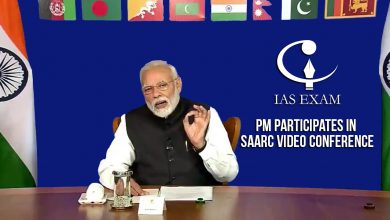Protecting Children’s Right to Protest
A child has as much right to be present at a protest site as any adult
There are many legal and social difficulties involved in the Supreme Court’s move to take suo motu cognizance of children taking part in the demonstrations of Shaheen Bagh in Delhi. This has a direct impact on children’s right to protest as well as on their mothers’ right to protest, specifically since the enforcement of National Register of Citizens and Citizenship (Amendment) Act could render both mother and child stateless.
Both Issues completely unrelated
Last month an infant died in the cold during the protests at Shaheen Bagh in Delhi. But criminalizing the mother and putting the onus of child’s death on her negligence rather than questioning and examining the economic and political reasons for poverty is a travesty of justice. By stating that women should not be allowed to take their children to protests, they are effectively been rendered impossible their own mobility and pushing them back to their homes. In Bengaluru, a migrant colony was recently demolished after videos claiming that illegal Bangladeshi immigrants were sheltered in the settlement went viral. A wall is being built in Ahmedabad to apparently hide slums from the U.S. President during his visit this month. In such a context, isn’t the idea of a safe home also mediated by class?
There is an erroneous notion that the infant died on account of the protest rather than due to other systemic issues. And the Supreme Court is assuming causality without even examining the matter. In the suo motu action, the Court has conflated two unrelated issues. The first is a child’s right to participate in or witness a protest. The second is the death of the infant. There is no obvious relationship between the first and second issue. The death of the child due to natural causes should have no bearing on children’s right to be present at a protest or a mother’s right to take her children to a protest.
A Child’s Right Protest
- Implicit in the freedom of speech and the freedom to assemble peaceably and without arms under Article 19 of the Constitution is the right to protest. This right is guaranteed to all citizens of India regardless of age. The United Nations Convention on the Rights of the Child (CRC), which India has ratified, expressly recognises in Article 13 that freedom of expression of the child includes the “freedom to seek, receive and impart information and ideas of all kinds, regardless of frontiers, either orally, in writing or in print, in the form of art, or through any other media of the child’s choice.”
- Both the Indian Constitution and the CRC state that no restriction may be placed on these freedoms except those that are necessary and imposed by statute for the “purposes of safeguarding the sovereignty, integrity and security of the state, friendly relations with foreign states, public order, decency or morality or in relation to contempt of court, defamation or incitement to an offence”. Even these restrictions must pass the test of reasonableness as understood by the constitutional courts. As such, neither the Constitution nor the CRC contemplate a blanket restriction being imposed on children’s right to protest by a court directive.
- Further, the CRC, in Article 5, recognises the “evolving capacities” of children. This means that as children acquire enhanced competencies, there is a diminishing need for them to be protected. They have a greater capacity to take responsibility for decisions affecting their lives. The law recognises that children do not magically acquire agency when they turn 18 years, but are capable of exercising their rights and that the law must facilitate the same.
- Article 12 of the CRC provides that member states should assure to the child who is capable of forming his or her own views the right to express those views freely. For this purpose, the child should be provided the opportunity to be heard in any judicial and administrative proceedings affecting the child, either directly or through a representative. Therefore, there can be no restriction on a child’s right to protest without hearing the child.
Protests – a place of learning for Children
While many schools encourage children to read newspapers and watch news channels, attending a protest is also a way for children to receive information and ideas. At a protest they get to witness expressions of discontent against acts or omissions of the government that have prejudicial and even violent impacts on people’s lives. A protest is also a space where children get to experience and assert citizenship. It’s a space for them to comprehend what ‘We the People of India’ encompasses; it is where they get to see people from all walks of life. It could also be a space for children to celebrate their unity as Indians.
As far as the CAA-NRC are concerned, women, especially poor women, will find it hardest to prove ancestry due to lack of documentation. Further the CAA and NRC directly affect children as well: if one parent is held to be an illegal migrant, it means the child will also be considered an illegal migrant. A child has as much right to be present as a stakeholder at such a protest as any adult.
While news reports say that the infant who died was exposed to the chilly Delhi air, they don’t mention the circumstances of the parents who are daily wage migrant workers living in an adjoining jhuggi in a plastic tent home.
SOURCE: The Hindu





.png)



